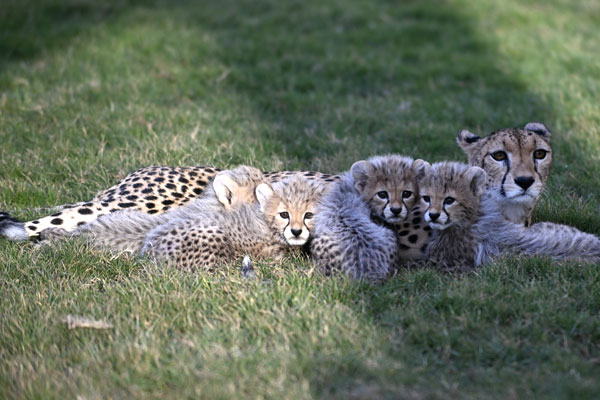The National Center for Wildlife (NCW) has announced the launch of the National Cheetah Conservation Strategy alongside the birth of four cheetah cubs, marking a significant milestone in Saudi Arabia's Cheetah Conservation Program.
It is an initiative, inaugurated last year by Minister of Environment, Water, and Agriculture, and Chairman of the Board of the National Center for Wildlife, Engineer Abdulrahman AlFadley.
Dr. Mohammed Qurban, CEO of the National Center for Wildlife, said: "The official launch of the National Cheetah Conservation Strategy and the announcement of four cheetah cubs signifies an important achievement in our conservation efforts. This strategy reflects our unwavering commitment to ensuring a sustainable future for wild cheetahs in their natural habitats in the Kingdom."
The announcement was made at NCW headquarters in Riyadh, highlighting strategic objectives and substantial progress in cheetah conservation.
The strategy sets ambitious goals for reintroduction through successful captive breeding, strategic site selection, and community engagement in wildlife conservation. Rigorous monitoring post-reintroduction aims to ensure the cheetah population's sustainability.
Dr Qurban said: "The birth of these cubs holds particular significance as the cheetah has been extinct in the Arabian Peninsula for over 40 years. NCW’s recent discovery of cheetah mummies in northern Saudi Arabia, dating back thousands of years, reflects the environmental importance of the Arabian Peninsula as a historical habitat for cheetahs."
"This motivates us to continue our efforts to restore and reintroduce cheetahs, guided by an integrated strategy designed in accordance with best international practices," he stated.
Structured across multiple phases, the strategy's first phase focuses on breeding, habitat conservation, and environmental assessment. Subsequent phases involve experimental releases of captive-bred cheetahs and widespread reintroduction with population monitoring.
Against the backdrop of global metrics indicating that just 15% of cheetahs born in the wild reproduce in captivity and of this group, only 20% continue to successfully reproduce, the birth of four cheetah cubs and the launch of the National Cheetah Conservation Strategy highlights Saudi Arabia's leadership and success in biodiversity preservation, including the protection by preserving endangered species and reintroduce extinct species.
The earlier introduction of the National Cheetah Conservation Program included the discovery of cheetah mummies in a cave in northern Saudia Arabia. These mummies, ranging in age from over 4,000 to 120 years, highlight their historical presence and biodiversity role. Genetic analysis further supports Saudi efforts in cheetah breeding and reintroduction, demonstrating the Kingdom's commitment to wildlife conservation.
Saudi Arabia continues to lead in cheetah conservation, leveraging scientific research, innovative strategies, and collaborative partnerships to reintroduce the species across its historical habitat, said Dr Qurban.
NCW remains steadfast in its commitment to preserving biodiversity and protecting the Kingdom's natural heritage for future generations, he added.

















